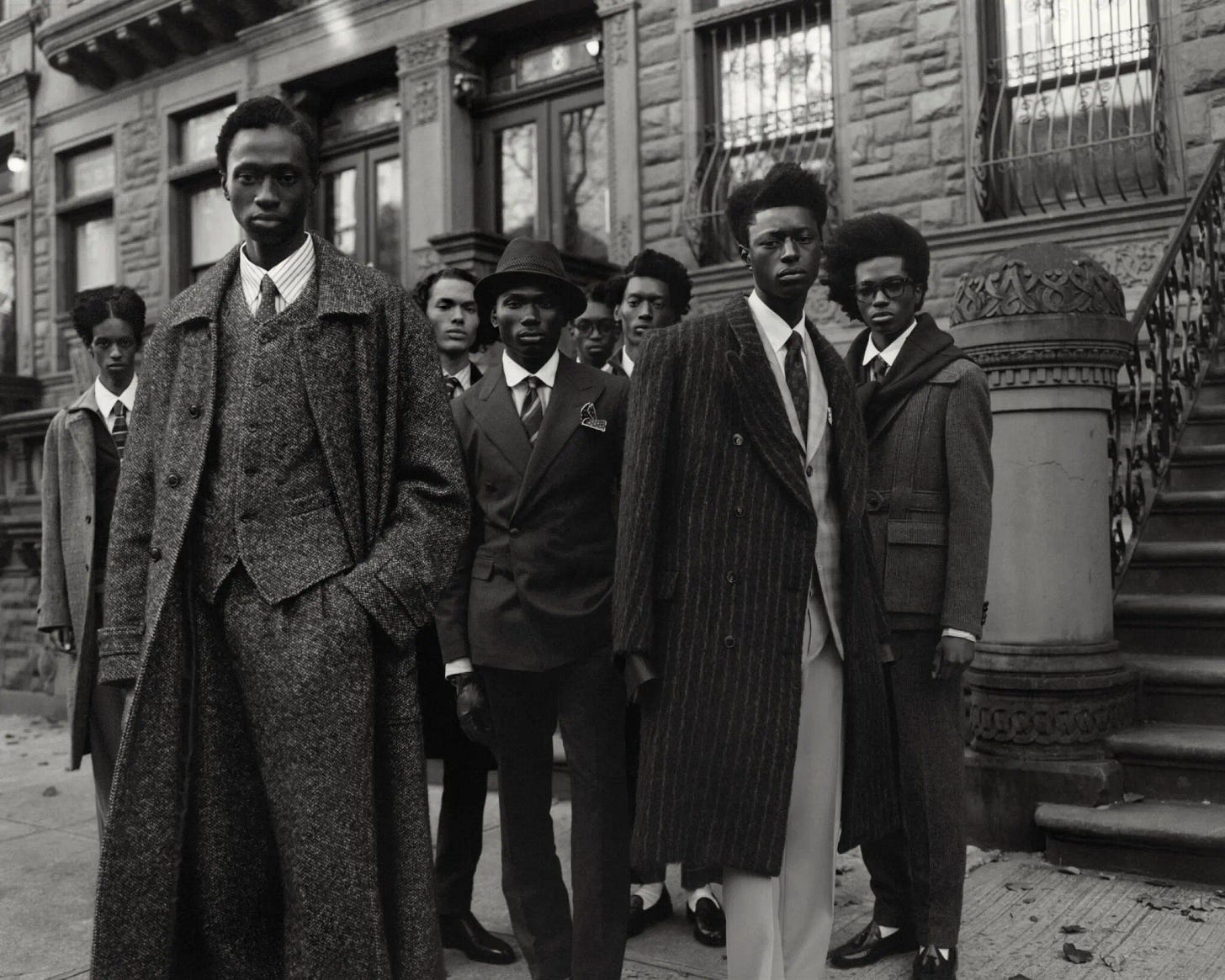That Harlem Elegance: Dandyism on 125th Street
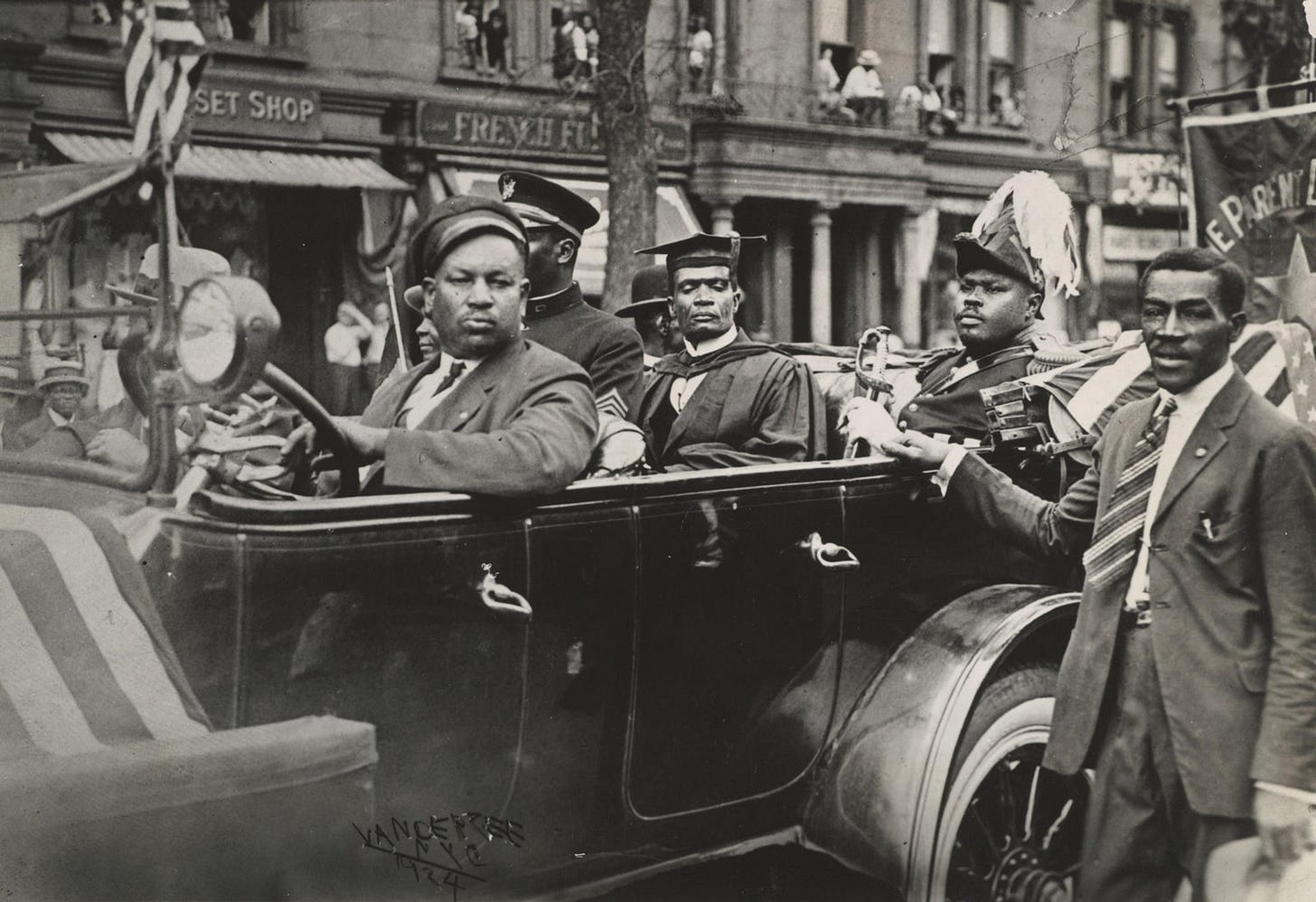
Let’s take a journey back in time.
The sidewalk shines under the Harlem sun. Suits in cream, navy, and gold glide past storefronts. Cufflinks wink like secrets. Brimmed hats tilt with purpose. The scent of pomade and cologne mingles with the sound of a saxophone spilling out from a corner stoop. You’d think it was Easter Sunday, but it’s just another afternoon on 125th.
In Harlem (NYC’s most stylish part of the borough if you ask me) style is performed. It’s Sunday Best turned everyday statement. A silent sermon preached from the hem of a wide-legged pant or the arch of a freshly shined shoe. This is not fashion for fashion’s sake. This is presentation as power, where the ordinary becomes operatic and dressing up becomes declaration.
Inside clubs like the Savoy Ballroom, velvet jackets twirled in rhythm with flared skirts. On the stage of the Apollo Theater, suits gleamed as brightly as the lights. To walk Harlem’s streets in the 1920s and ’30s was to know that your outfit mattered. It could open doors. It could shut down assumptions. It could say: We are here. We are dignified. We are undeniable.
In Harlem, there was a powerful principle: fashion is weapon, armor, and poetry. All at once.
If you’re enjoying our articles, send a matcha our way. 🍵 It’s my favorite drink and now a sweet way to support Fashion Talk—a free platform made with love and intention. To those who already have: your taste is impeccable.
— Amarissa ♡
Inside the Harlem Renaissance Lies the Legacy of the Original Architects of Style
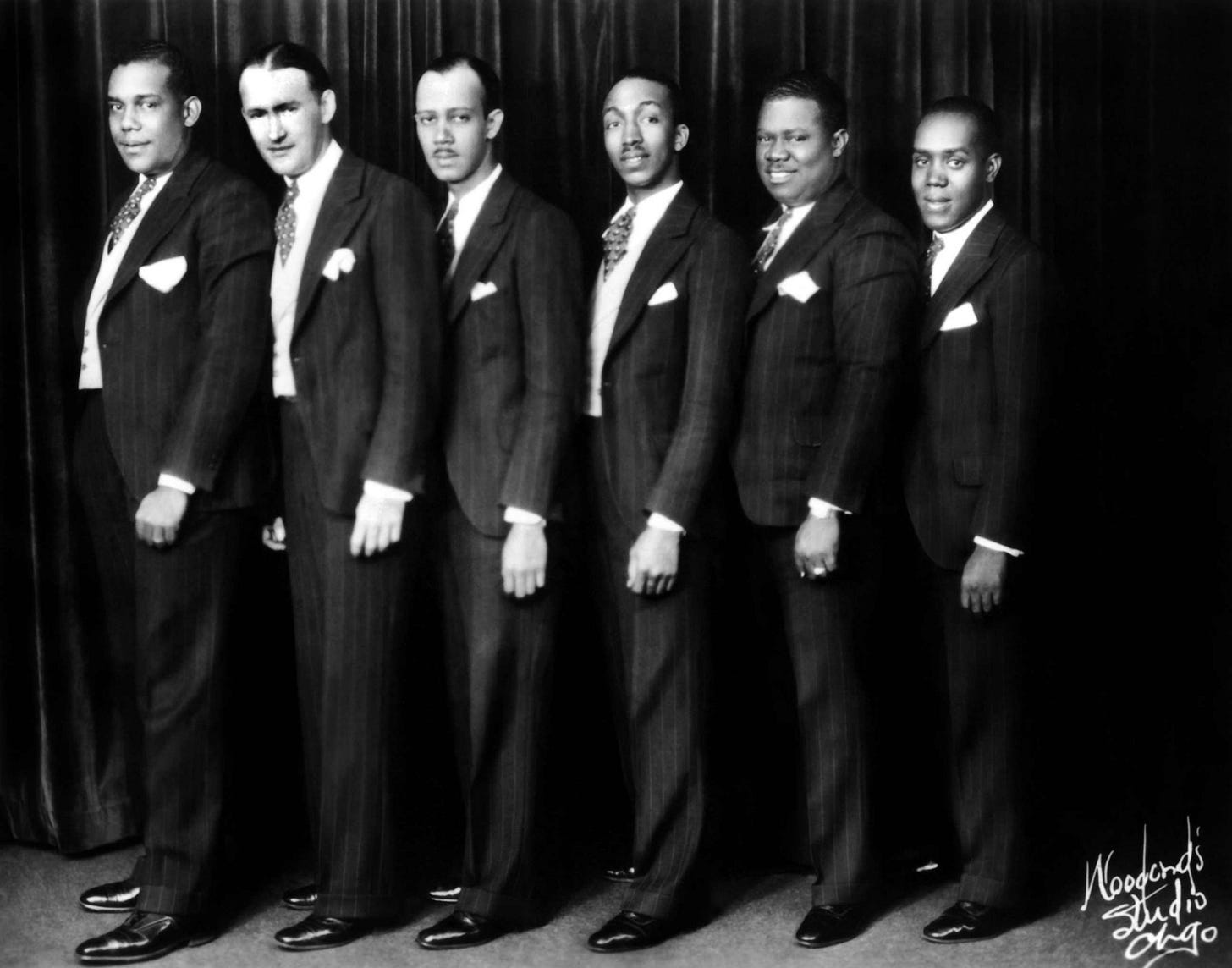
During the Harlem Renaissance of the 1920s and ’30s, fueled by the Great Migration of Black Americans from the rural South to northern cities, Harlem became a crucible of Black art, music, literature, and fashion.
In this Golden Age of Black culture, personal style took on political meaning. To step out in a tailored suit or a luxurious fur in Harlem was to announce one’s dignity and modernity in a society that often denied Black excellence. As Brandice Daniel, Founder of Harlem’s Fashion Row, notes, the Renaissance gave fashion “a soul” – it created a visual identity of Black excellence.
Both men and women embraced the spotlight, each putting a Harlem spin on the classic 1920s look. Women floated through the streets in beaded gowns and floor-length furs, while men cut sharp figures in tailored suits, silk ties, fedora hats tipped just so, and oxfords that gleamed with every step. Some took it further — billowing zoot suits made sure the silhouette spoke before you did.
Take Louis Armstrong. The jazz great wasn’t only a revolutionary sound, he was a walking spectacle in perfectly tailored suits, silk pocket squares, and a smile that lit up every Harlem stage. Whether playing late-night sets at Connie’s Inn or laughing backstage at the Apollo, Armstrong’s presence was as polished as his horn.
Black Harlemites’ clothing became a visual manifesto, stitched with pride, ambition, and the sharp defiance of survival. The Harlem dandy (or race man, in the parlance of the time) used clothing to shatter stereotypes that portrayed Black Americans as poor, servile, or inferior. They emerged as a cultural force. Suits were strategic as much as they were just tailored. Whether it was the preacher on Lenox Avenue in his Sunday three-piece, or the jazz musician in a midnight-blue tux at the Savoy, fashion was a way to insist on presence in a society built to erase you. Black Harlemites understood this all too well: style could rewrite the narrative of what it meant to be Black and free.
Notably, Women and LGBTQ+ Communities Were Central to this Sartorial Revolution
For women, dandyism took another form. Some wore furs and pearls with flapper ease, while others subverted the look entirely — suiting up in tuxedos and oxfords, smoking cigars, and turning the gaze right back at the viewer. It wasn’t about copying men. It was about rewriting femininity with grit and ✨ glamour ✨
Take Zora Neale Hurston, the acclaimed writer and anthropologist, who was as renowned for her personality and wardrobe as for her prose. Hurston would turn heads at parties with her eclectic outfits. She once showed up in a Norwegian folk dress, and another time in a Seminole patchwork skirt, reveling in her ability to surprise and charm.

She and other “New Women” of the era rejected stuffy Victorian norms; shorter hemlines, flashy accessories, and even menswear-inspired pieces signaled their liberation from traditional gender roles. Harlemites and artists, like cabaret singer Josephine Baker, might drape themselves in furs or wear tailored suits and cloche hats, using fashion to navigate spaces of power with confidence.
Another powerhouse was Bessie Smith, the Empress of the Blues, who wore her boldness like she wore her gowns. She performed in dramatic, beaded dresses, velvet wraps, and feathered headpieces that commanded the stage as much as her voice did. Smith wasn’t afraid to dress larger than life, blending diva energy with street-smart edge. Her fashion reflected her attitude: unbothered, commanding, and ahead of her time.
For Harlem creatives in the LGBTQ+ community, fashion became a kind of armor. A tailored coat could shield. A fedora could declare. Performers like Gladys Bentley blurred every line that existed — between gender, between class, between what the world expected and what they dared to be. Every night at Harlem speakeasies, Bentley took the stage in her signature tuxedo and top hat, projecting an image as daring as her lyrics.
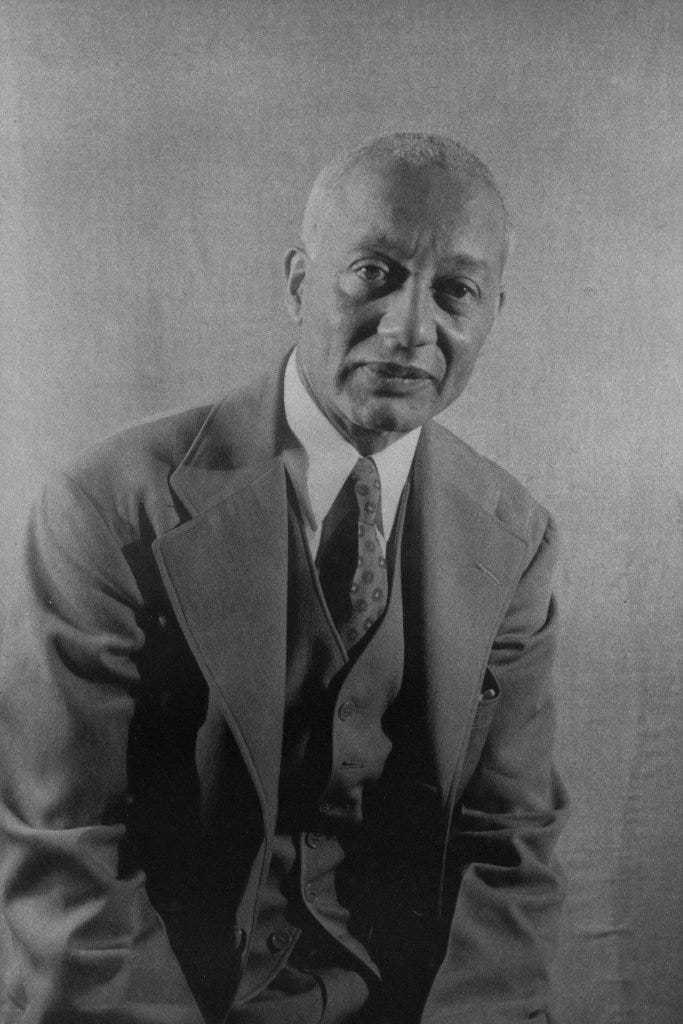
Philosopher Alain Locke, often called the “Dean” of the Harlem Renaissance, personified the dandy ideal in more ways than one. As the editor of The New Negro anthology, Locke championed Black artists and argued that creative expression – style included – was a path to uplift. Privately a gay man in a homophobic era, Locke cultivated an impeccably genteel appearance (complete with gloves, cane, and Oxford degrees) to assert his identity on his own terms.
His protégé, poet Countee Cullen, and fellow writer Claude McKay also appreciated the politics of presentation. McKay’s novel Home to Harlem lovingly details the “draped-down” fashion and “high-styled hair” of ordinary folks in Harlem, celebrating street dandies as icons of Black freedom and cool. For these figures, style and substance were intertwined: how they dressed was an extension of what they believed. The right attire could challenge racial boundaries, gender expectations, or class hierarchies…sometimes all at once.
The Birth of the Legendary Zoot Suit

By the late 1930s, Harlem’s flashy style would give birth to the legendary zoot suit, a flamboyant uniform of wide-legged trousers and long draped jackets. Young Black (and Latino) men in Harlem wore zoot suits to rebel against austerity and invisibility, taking up space with outrageous silhouettes.
When wartime authorities frowned on the excess fabric and banned the suits, zoot-suiters wore them anyway, risking arrest or assault to make a point. Zoot Suit Riots underscored just how powerful a statement clothes could make.
Dapper Dan & the Birth of Harlem Street Couture
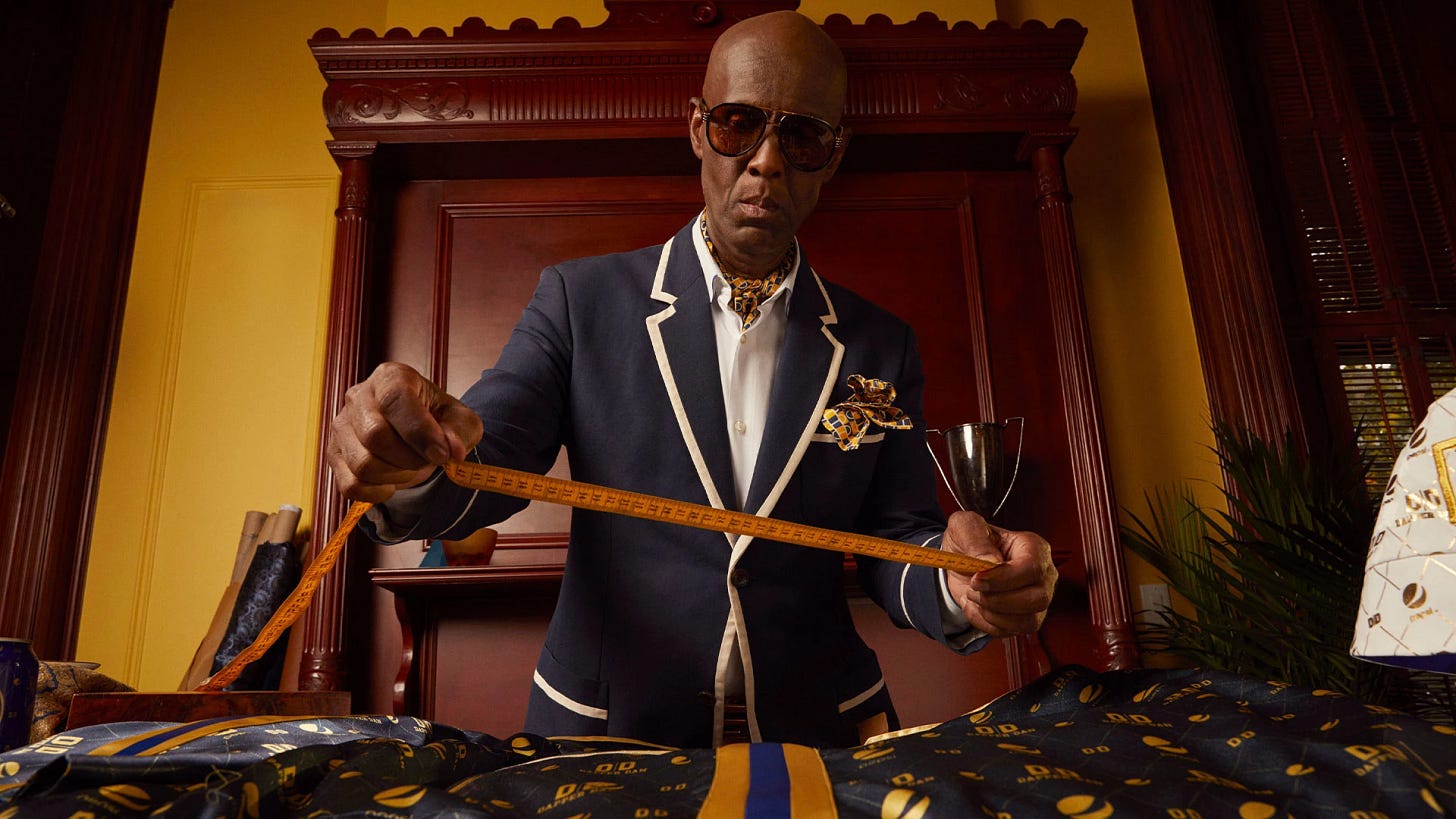
The exuberant style ethos of the Harlem Renaissance never truly disappeared, it simply evolved. Fast forward to the 1980s. The suits were louder. The energy sharper. And once again, Harlem was at the center of a fashion revolution.
The birthplace of hip-hop in the Bronx and Harlem’s own rich heritage gave rise to a luxury streetwear scene. Enter Dapper Dan. From a boutique on 125th, Dan remixed luxury on his own terms. He didn’t wait for designer brands to recognize Black style, he reimagined them himself. Rap stars, athletes, and Harlem’s hustlers flocked to his shop for custom pieces that Gucci itself wouldn’t dare make at the time: think Louis Vuitton logo fur jackets, Gucci-print evening suits, and monogrammed street ensembles. Gucci, Louis Vuitton, Fendi — all stitched into bomber jackets, hoodies, and mink coats tailored to Harlem’s tastes.
In true dandy spirit, Dapper Dan was both an innovator and a rebel. He operated bootleg-style, without the luxury houses’ approval, hijacking high fashion and repurposing it for Black expression. Dan’s creations weren’t knock-offs. They were declarations. Couture born from hustle.
His bespoke suits and over-the-top accessories embodied what Professor Miller calls the “semiotic power of the dandy.” He became “the flâneur with a swagger beyond reproach, a Harlem dandy” incarnate. Dan gave Harlem more than clothes. He gave it a blueprint: If the world won’t make space for your excellence, go take up space.
Modern Harlem Dandyism & Its Influence on the World
As one cultural critic observed, the Harlem dandy’s influence can be seen in how hip-hop fashion uses style to convey “status, success, and individuality.” What were gold chains, customized tracksuits, and designer sneakers if not a new spin on the old dandy mission to demand respect? From the Kangol hats and Adidas of the ’80s B-boys to the blinged-out ghetto fabulous looks of the ’90s, Black style continued to broadcast pride and resilience.
Modern Harlem dandyism embraces gender-fluid elegance, as seen in this contemporary take on the power suit. In 21st-century Harlem, you’ll find that suiting and styling remain a vibrant form of storytelling, now with new-age twists. Stroll through the neighborhood today and you might catch an older gentleman in a brimmed hat and three-piece suit, shoes shined to mirror gleam — a living homage to the 1920s — walking beside a young creative in a flowing unisex coat, sneakers, and bold jewelry. Both, in their own ways, are carrying the torch.
It’s no coincidence that Harlem native A$AP Rocky has become a front-row fixture at Fashion Week and a global style icon. With his fearless tailoring, fluid silhouettes, and flair for reinvention, he doesn’t just wear the title, he embodies the modern dandy.
The Harlem dandy never cared to fit in. He’s been about standing tall. She’s been about rewriting the rules. They’ve always been about presence — loud, refined, unapologetic, charismatic. A muse.
From the Savoy to New York Fashion Week, from Sunday suits to couture remixes, the tradition continues. Harlem doesn’t just wear fashion.
It performs it.
Poll Of The Day:
connect with us: instagram → pinterest → twitter → bluesky







